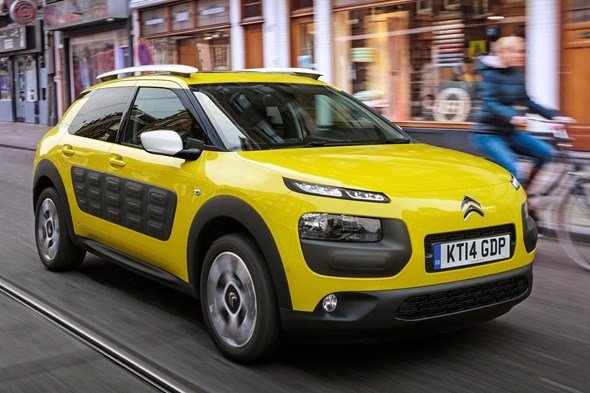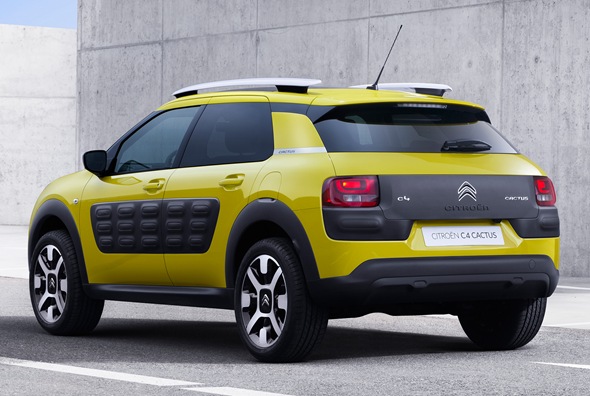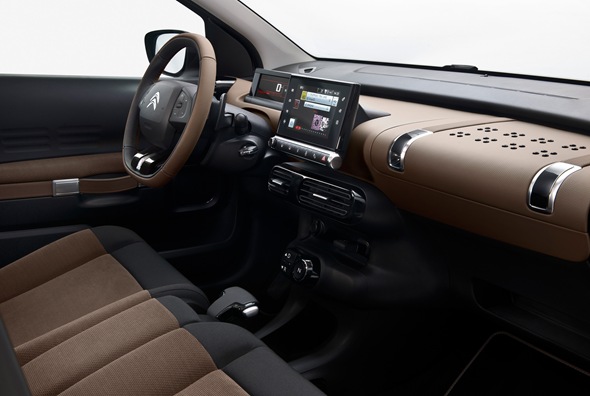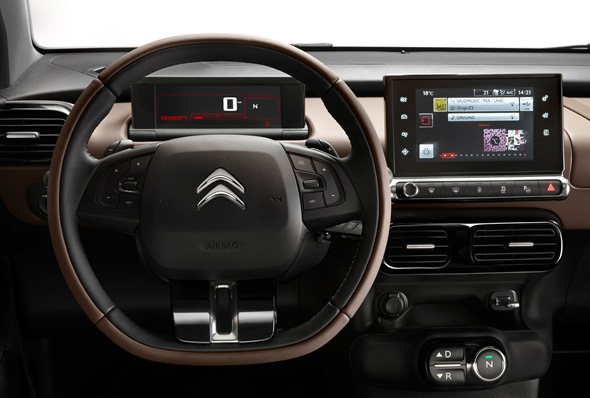First Drive Review: Citroen C4 Cactus Flair 1.2 PureTech 110 S&S
Subtle is something that Citroen doesn’t do well.
Across its entire range, there are examples of the company trying hard to be different, from the shark-finned DS3 to the cleverly-packaged C4 Picasso.
Now there’s the C4 Cactus and Citroen has firmly ignored the conventional rules for car design.
You’ll notice it most from the outside, where there’s a collection of design details that almost defy classification.
Thin LED blades sit high on the bonnet, above more conventional headlights that almost hide within large plastic housings. A highly curved leading bonnet edge sits atop a virtually grille-less front end, while at the back there’s an almost retro-style plastic panel that runs the width of the car. A floating roof with roof rails tops off a sleek glasshouse, with a thick C-pillar lending a strong look to the car.
Oh, and there’s bubblewrap stuck to the side.
This ‘AirBump’ panel is a thermoplastic polyurethane that took the firm three years to develop. Containing air pockets that protect the underlying metal, it’s possible to slam doors and trolleys in to the car without leaving a mark, something I greatly enjoyed putting to the test.
However, whilst an excellent feature, and sure to reduce end-of-lease damage bills, the fact they don’t extend far enough to cover the trailing edge of the rear door is a disappointment.
Cost-cutting interior
Inside, it’s a spacious environment but not exactly luxurious. With a price tag starting just south of £13,000, some corners have had to be cut, but there’s been some really clever thinking about when and where to save the cash.
You won’t find any grab handles, for example. Generally unused, especially as this isn’t a car for throwing around the Col de Vence at speed, losing those saves a few pounds.
Below knee level, the plastics get a bit hard and scratchy but you never touch those areas so it’s ok. The rear windows don’t wind down, instead popping out on a hinge that saves the need for an expensive motor. It also saves 11kg on the scales.
Where Citroen could save money, but shouldn’t, everything works remarkably well. The dashboard is low and wide, thanks mostly to a roof-mounted passenger airbag, giving a wide view ahead and making the cabin feel airy. The large glove box mimics an old travel chest, something that’s repeated across the doors.
A digital dashboard sits ahead, with all the information you need, while a second digital touch screen is mounted in the centre console. This allows you access to everything else, but also has shortcut buttons to frequently used areas, as well as a small contingent of physical buttons for really important stuff.
There’s also the option of a huge panoramic roof that doesn’t need a blind thanks to UV4 filtering glass. This, again, saves weight and money but, more importantly, it actually works; on a hit and sunny day in Holland, I never felt I needed to close a blind, despite the lack of follicles covering the top of my head.
Engines
All this clever thinking results in a price tag that will make Ford Focus buyers weep, while bringing the weight of this hatchback-crossover crossover down to just 965kg. This, in turn, means economy and CO2 emissions are excellent.
Even the 1.2-litre three-cylinder turbocharged PureTech engine I tested produces just 105g/km of CO2, despite its 108bhp output. Officially it’ll return some 61mpg, but 91.1mpg is claimed from the BlueHDi100. That pumps out 82g/km of CO2, giving it a BIK burden of just 14%.
Performance from the PureTech petrol is enhanced thanks to that weight saving too, with the 0-62 sprint taking a relaxed 10.4 seconds, but that’s quicker than the more powerful 1.6-litre engined C4 hatchback that weighs around 200kg more.
Handling
That all counts for nothing though if the car just doesn’t work on the road and the news here is good. Ignoring the trend for ever firmer suspension and go-kart-like handling, Citroen has gone back to its roots and produced a car that simply wafts over road imperfections.
Only sharp ridges from raised ironworks or sudden potholes upset it, with a sudden think making its way to the cabin, but for the most part it’s a supremely comfortable place to spend some time.
Throw it at some corners and there’s fair degree of body roll, and understeer soon comes in to play, but there’s no more so than in any of its crossover rivals, none of which are exactly entertaining to drive. Keep within its limits and it’s well balanced, always comfortable and incredibly easy to drive.
For company buyers, it makes sense too, thanks to its low CO2 and P11d values, and offers a distinctive and cost-effective alternative to the usual C-segment suspects.
All of which means that Citroen has a resounding success on its hands.
Good value, well thought through, lightweight, spacious, economical and stylish, there’s no reason why the C4 Cactus can’t do exceptionally well for the brand. 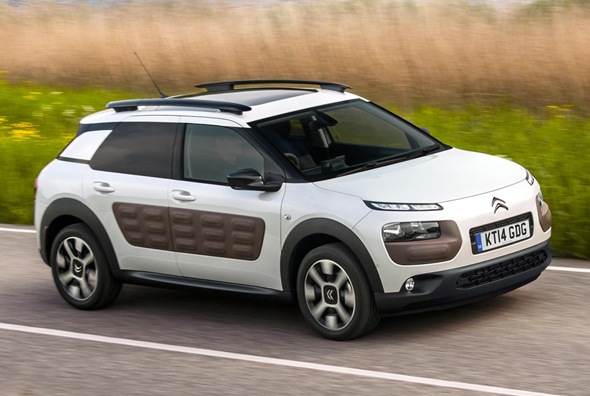
C4 Cactus at a glance:
Length: 4157mm
Width: 1946mm (1729mm without mirrors)
Height: 1540mm
Wheelbase: 2595mm
Boot space: 358 / 1170 litres
Petrol engines: 1.2 VTi 75PS, 1.2 VTi 82PS, 1.2 e-THP 110PS
Diesel engines: 1.5 BlueHDi 100PS
Fastest: 1.2 e-THP 110PS – 0-62mph 9.3secs, 117mph top speed
Trims: Touch, Feel, Flair
Cheapest: 1.2 VTi 75 Touch - £12,990
Priciest: 1.5 BlueHDi Flair Auto - £18,190
Rivals: Peugeot 2008, Kia Soul, Nissan Juke
On sale: Now – first deliveries from October 2014

